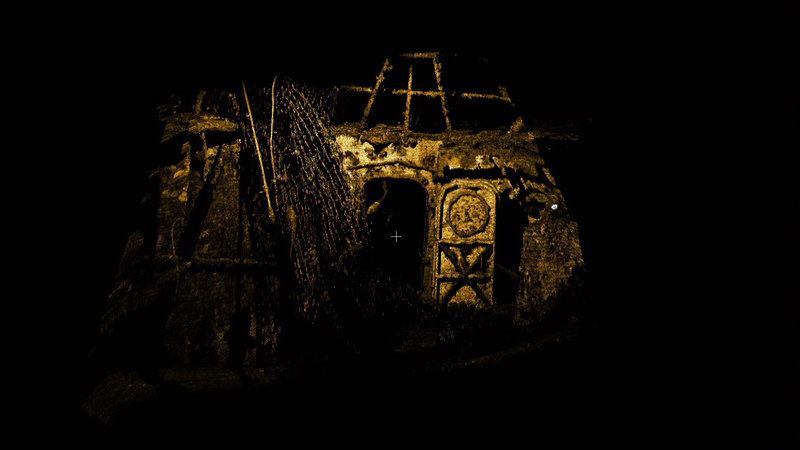July 27, 2020: USS Baldwin

Image courtesy of Kraken Robotics and the NOAA Office of Ocean Exploration and Research, 2019 Technology Demonstration. Download larger version (jpg, 564 KB).
Bow facing south and lying straight up, the World War II-era USS Baldwin remained silently on the seafloor until July 27, 2019, when a team lead by the NOAA Office of Ocean Exploration and Research was able to use remotely operated vehicles and the Kraken SeaVision® laser scanner to image and document the wreck site. SeaVision® is a compact underwater laser imaging system that offers the resolution, range, and scan rate to deliver dense three-dimensional (3D) point cloud images of subsea infrastructure with sub-millimeter resolution in real time.
This 3D scan shows the starboard flybridge of the USS Baldwin with the open door into the bridge. The scan shows one of the many fishing nets entangled in the wreck.
From: Rediscovering USS Baldwin.